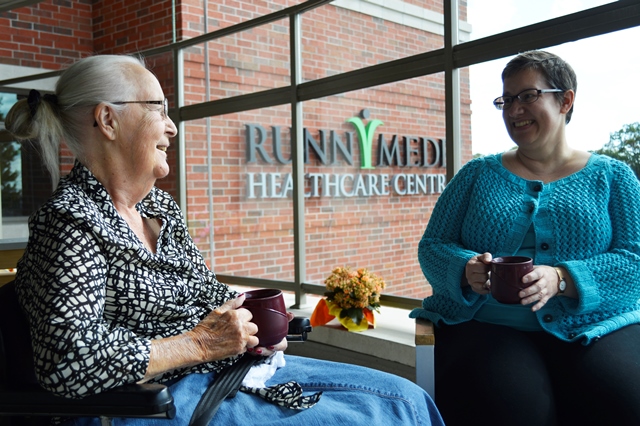
Patient experience surveys in Ontario consistently find a link between satisfaction with hospital food and overall patient satisfaction. Comprised of different backgrounds, cultures and ages, patients have varied needs and expectations. One priority shared by all of them though, is high-quality hospital food. Runnymede Healthcare Centre is committed to ongoing quality improvement and is always looking for initiatives and processes that can be implemented to better meet the needs of our patients’ including their dietary requests.
Responding to patient needs
Patients and their families communicate food preferences through their regular interactions with the hospital’s diet technicians and clinical dietitians. Feedback is also given to a Menu Committee that was created in early 2013, and is comprised of a dietitian, speech-language pathologist, food services representative and a patient representative. The committee reviews menus prior to their launch, tests recipes and provides input into new food products and recipes.
MORE: DEFINING THE PATIENT EXPERIENCE
Involving patients in the decision-making process is an important function of the committee which evaluates the new food recommendations based on a variety of criteria such as patient safety, nutritional value, feasibility, flavour and appearance. If the suggestion satisfies all criteria, it’s incorporated into the hospital’s menu.
What patient satisfaction looks like
Today’s patients are more conscious than ever about the positive impact that good nutrition can have on health and recovery. In many cases low sodium or low fat menu options are valued highly by patients, especially those who are living with chronic conditions such as heart disease or diabetes.
Alternatively, patients may prefer to continue eating foods they enjoyed prior to being admitted to the hospital. In these cases, Runnymede’s dieticians balance a patient’s request with his/her clinical needs. If a patient can safely tolerate a more indulgent diet, the request will be accommodated. In cases where such a diet is considered to be a health risk, a more clinically-appropriate compromise will be suggested.
Placing patients at the centre of the decision-making process ensures that their voice is heard and their needs are being met, promoting patient satisfaction and an enhanced patient experience.
MORE: THE POWER OF PEOPLE: ENHANCING THE PATIENT EXPERIENCE
Ongoing process improvement
Like nearly one-third of Runnymede patients, Barbara Hopkins has difficulty swallowing and requires a modified diet that includes thickened beverages. Born in Britain, Barbara used to enjoy her tea time ritual every day, but since her stroke over two years ago and subsequent admission to Runnymede for rehabilitation, she has not been able to have a cup of tea.
Patients identified Runnymede’s selection of thickened hot beverages in their quality improvement wish list for the hospital. In response, the Menu Committee developed a more enjoyable alternative for patients with swallowing difficulties, like Barbara.
After trying a number of flavoured formulas, the committee proposed an innovative solution: brewing real coffee and tea, and then mixing in the prescribed amount of thickener. The result not only tastes better, but the mixture can be custom-formulated to best suit each patient’s therapeutic needs.
The new thickened hot beverage program will be implemented across the hospital in the coming months, following the roll-out of education for staff. However, a recent pilot project gave Barbara the opportunity to try a sample of the new thickened tea. The experience not only allowed her to regain a lost link to her past, but it also significantly enhanced her patient experience.
By maintaining feedback processes that take patient preferences on board, hospitals can better promote quality improvement and enhance patient satisfaction. Runnymede’s example shows that restoring some of life’s simplest pleasures can go a long way toward enriching the patient experience.

